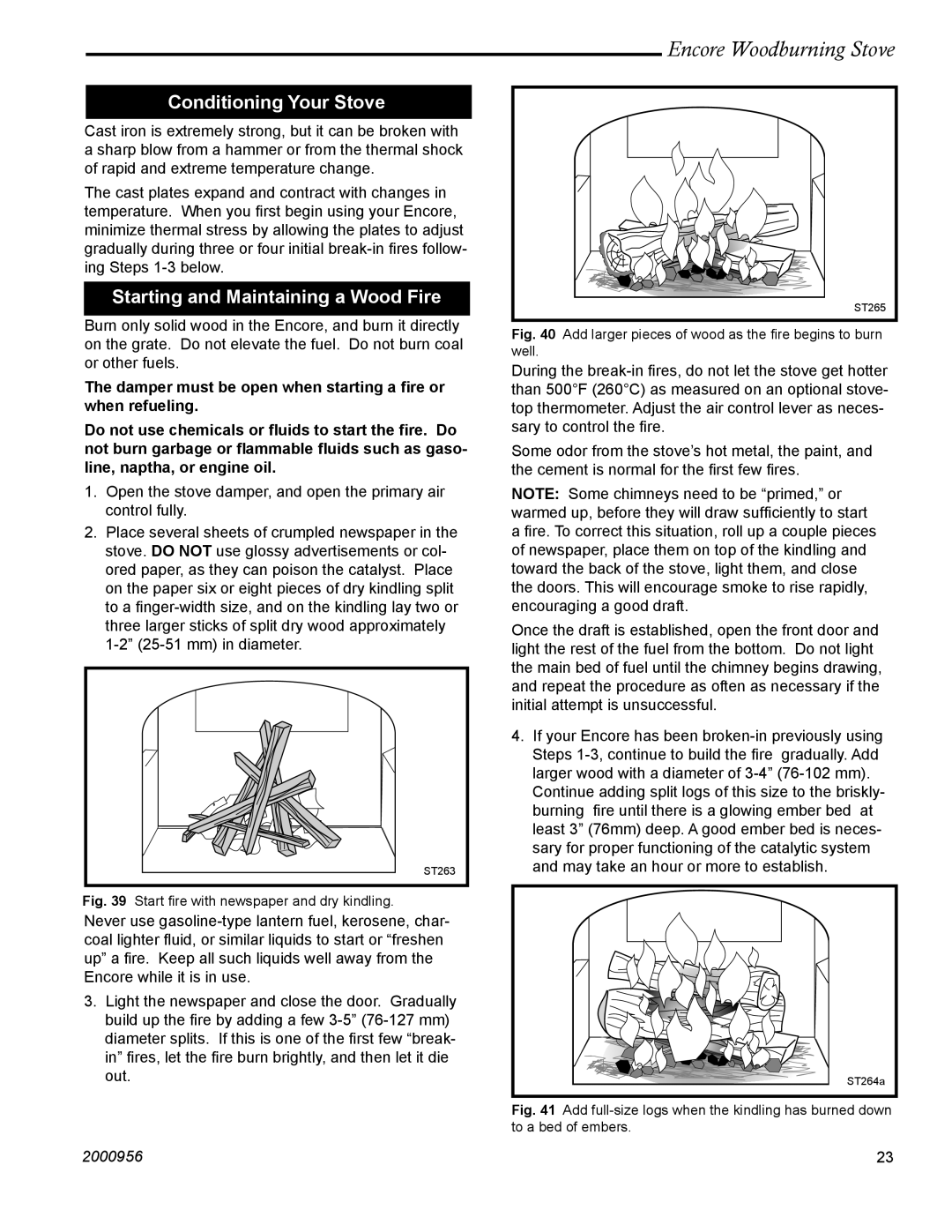
Conditioning Your Stove
Cast iron is extremely strong, but it can be broken with a sharp blow from a hammer or from the thermal shock of rapid and extreme temperature change.
The cast plates expand and contract with changes in temperature. When you first begin using your Encore, minimize thermal stress by allowing the plates to adjust gradually during three or four initial
Starting and Maintaining a Wood Fire
Burn only solid wood in the Encore, and burn it directly on the grate. Do not elevate the fuel. Do not burn coal or other fuels.
The damper must be open when starting a fire or when refueling.
Do not use chemicals or fluids to start the fire. Do not burn garbage or flammable fluids such as gaso- line, naptha, or engine oil.
1.Open the stove damper, and open the primary air control fully.
2.Place several sheets of crumpled newspaper in the stove. DO NOT use glossy advertisements or col- ored paper, as they can poison the catalyst. Place on the paper six or eight pieces of dry kindling split to a
ST263
Fig. 39 Start fire with newspaper and dry kindling.
Never use
3.Light the newspaper and close the door. Gradually build up the fire by adding a few
Encore Woodburning Stove
ST265
Fig. 40 Add larger pieces of wood as the fire begins to burn well.
During the
Some odor from the stove’s hot metal, the paint, and the cement is normal for the first few fires.
NOTE: Some chimneys need to be “primed,” or warmed up, before they will draw sufficiently to start a fire. To correct this situation, roll up a couple pieces of newspaper, place them on top of the kindling and toward the back of the stove, light them, and close the doors. This will encourage smoke to rise rapidly, encouraging a good draft.
Once the draft is established, open the front door and light the rest of the fuel from the bottom. Do not light the main bed of fuel until the chimney begins drawing, and repeat the procedure as often as necessary if the initial attempt is unsuccessful.
4.If your Encore has been
Continue adding split logs of this size to the briskly- burning fire until there is a glowing ember bed at least 3” (76mm) deep. A good ember bed is neces- sary for proper functioning of the catalytic system and may take an hour or more to establish.
ST264a |
Fig. 41 Add full-size logs when the kindling has burned down to a bed of embers.
2000956 | 23 |
